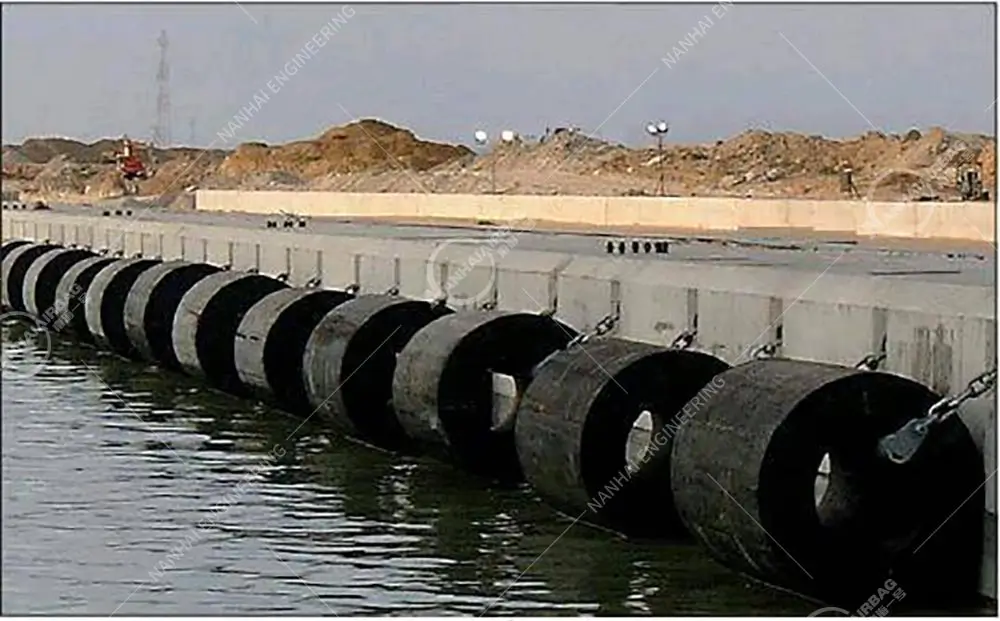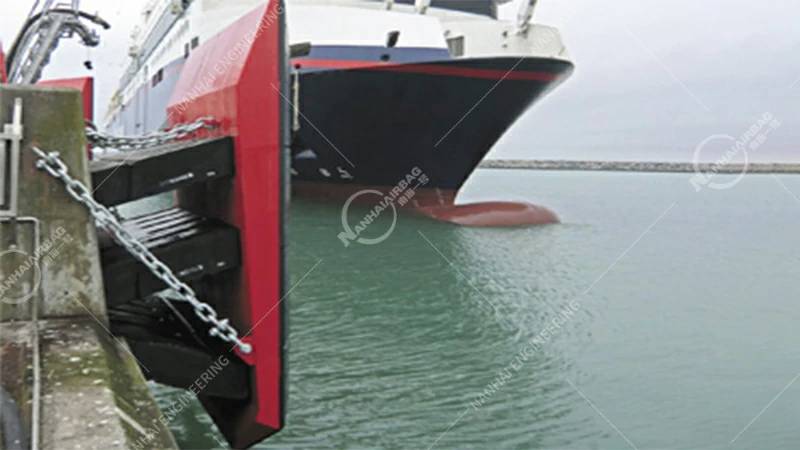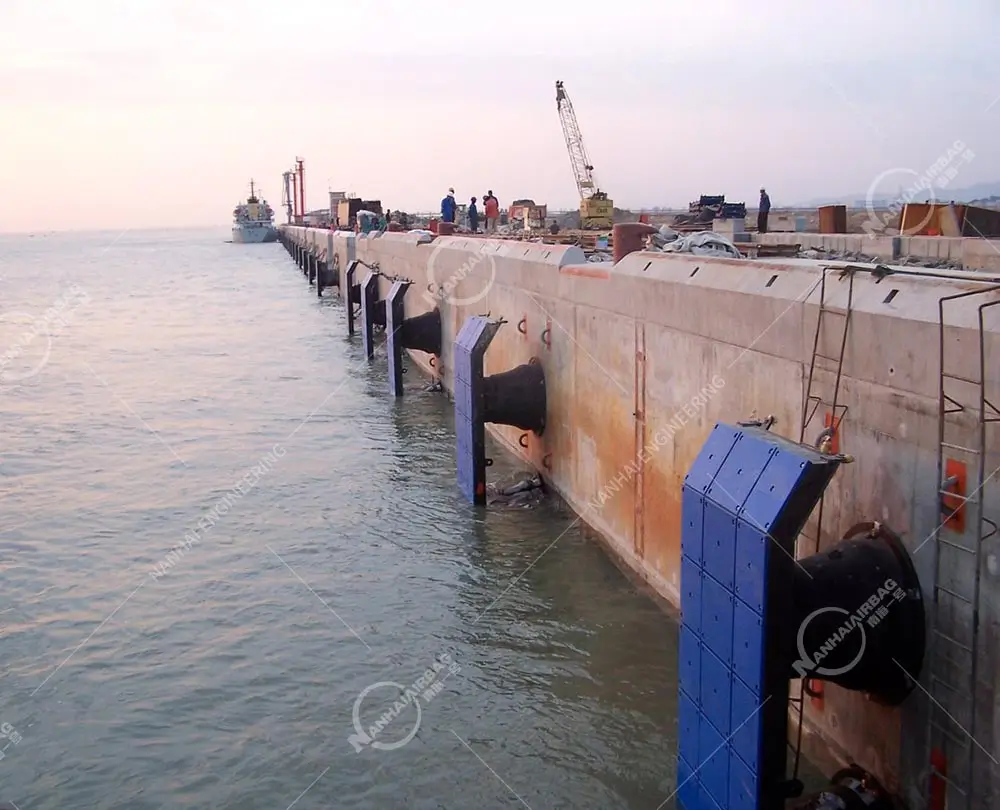Inflated Innovation: Ship Airbags in Heavy Lifts
06/26/2025Things to pay attention to when using ship launching airbags
06/27/2025Rubber Fender Testing Items
Rubber fenders are critical for protecting ships and docks from impact damage during berthing. Whether you’re handling small fishing vessels or massive cargo ships, reliable marine fenders ensure safety and reduce maintenance costs. But how do you know if a rubber fender is truly dependable?
Why Is Rubber Fender Testing Urgent and Necessary?
Imagine a fully loaded ship approaching a busy terminal. If the rubber fenders installed on the dock fail to absorb the energy effectively, the damage could be catastrophic to both the vessel and the infrastructure. In recent years, as ports handle larger vessels and higher traffic, quality assurance through strict testing has become more critical than ever.
At NANHAI, we understand the real-world consequences of product failure. That’s why our rubber fenders for sale go through a complete series of performance tests to ensure safety, durability, and long-term cost efficiency.
Types of Rubber Fenders (Know What You’re Testing)
Before diving into testing, it’s important to recognize the variety of ship fenders in use:
- D-Type Fenders: D-shaped profile, ideal for small boats and wharfs.
- Cylindrical Fenders: Round cross-section, suitable for high-energy impact zones.
- Arch Fenders: Arch-shaped for superior energy absorption and versatility.
- V-Type Fenders: V-shaped profile offering robust impact protection.
- Cone Fenders: Cone-shaped, known for high energy absorption and low reaction force.


-fenders-拷贝.webp)


Each fender type has unique performance requirements, and thus different testing focus.
Rubber Fender Testing Items
Here’s a breakdown of the key testing procedures NANHAI uses to ensure product excellence:
1. Visual Inspection
Purpose: Check for cracks, bubbles, surface defects, or color inconsistencies.
Method: Conduct a visual scan under standard lighting to confirm surface quality.
2. Dimensional Check
Purpose: Confirm size accuracy to meet design specs.
Method: Use calipers or thickness gauges to measure length, height, and thickness.
3. Hardness Test
Purpose: Determine material resistance and elasticity.
Method: Shore A or Shore D hardness meters are used to gauge rubber density.
4. Compression Performance Test
Purpose: Evaluate how well the fender compresses and rebounds under pressure.
Method: Hydraulic press applies gradual load, recording maximum compression and rebound rate.
5. Tensile Strength Test
Purpose: Measure durability and resistance to breakage.
Method: A tensile testing machine stretches the sample until rupture, noting peak force and elongation.
6. Abrasion Resistance Test
Purpose: Ensure long-term resistance to wear and tear.
Method: Use abrasion testers to simulate real-world contact and record material loss.
7. Aging Resistance Test
Purpose: Predict performance over time in harsh environments.
Method: Expose samples to UV light, ozone, and heat to simulate years of exposure.
8. Oil and Chemical Resistance Test
Purpose: Assess compatibility with fuels, oils, and chemicals in marine settings.
Method: Soak fender samples in substances and check for changes in structure or properties.
9. Dynamic Performance Test
Purpose: Simulate real-time impact and reaction forces.
Method: Conduct impact loading and measure rebound efficiency.
10. Environmental Compliance Test
Purpose: Confirm eco-friendly materials usage.
Method: Test for RoHS, REACH, and other environmental standards compliance.
Why Choose NANHAI Rubber Fenders?
- Full inspection on every unit before shipment
- International testing compliance: ISO, PIANC, HG/T standards
- Durable in extreme weather and sea conditions
- Custom designs and sizes available
- Competitive rubber fenders for sale — factory direct!
FAQ
What types of rubber fenders are commonly used?
D-type, arch, cylindrical, cone, V-type, and panel fenders are commonly used based on vessel size and docking structure.
How is a rubber fender tested for durability?
Durability is tested through tensile strength, aging simulation, abrasion, and compression tests to simulate years of marine service.
Why is compression testing important for marine fenders?
It determines the fender’s ability to absorb energy and return to its shape after pressure — a key factor in real-world safety.
How do I choose reliable rubber fenders for sale?
Check test certifications, supplier credibility (like NANHAI), and product data such as hardness, tensile strength, and reaction force.
Conclusion
Rubber fender testing is not just a formality — it’s a mission-critical process that ensures safety, longevity, and compliance in the marine industry. Whether you’re sourcing marine fenders, ship fenders, or seeking high-performance rubber fenders for sale, NANHAI guarantees fully tested, certified, and dependable solutions for your port or vessel.
Need help finding the right fender for your dock or vessel?
Contact NANHAI today and speak with our marine protection experts!
